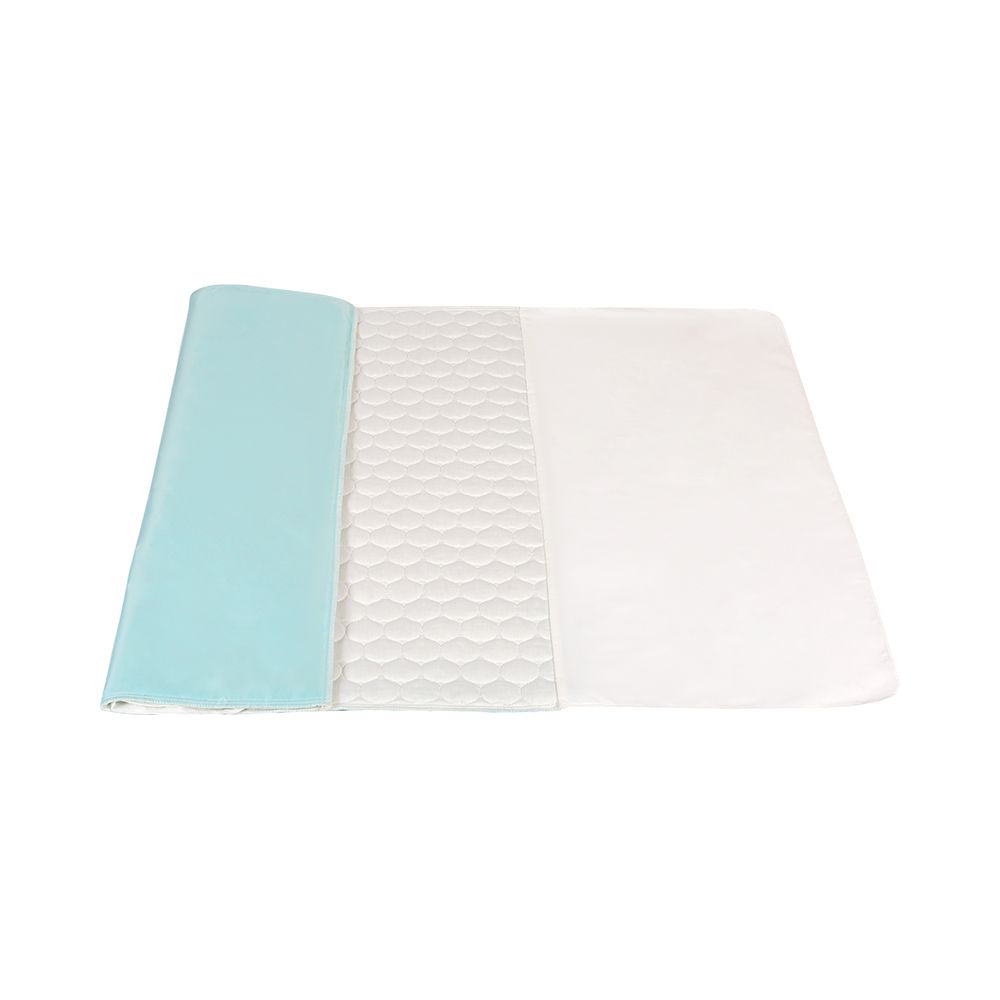Washable adult underpads use a combination of materials and technologies to create a leak-proof barrier. These are essential for preventing fluid from seeping through to the underlying surface. Here are some of the key materials and technologies used:
Materials
Polyurethane Laminate (PUL): A thin, flexible layer of polyurethane is laminated to a fabric, creating a waterproof yet breathable barrier. PUL is often used in the backing layer of underpads to prevent leaks.
Vinyl (PVC): Polyvinyl chloride is a durable and waterproof material commonly used in the backing of underpads. It provides an effective barrier against fluid but is less breathable than PUL.
Thermoplastic Polyurethane (TPU): TPU is a versatile material that offers both waterproof and breathable properties. It is often used in high-performance underpads for its durability and flexibility.
Polyester: Polyester fabrics, often treated with waterproof coatings, are used to provide an additional layer of protection against leaks.
Nylon: Like polyester, nylon can be treated with waterproof coatings to enhance its leak-proof properties.

Technologies
Lamination: The process of bonding a waterproof layer (such as PUL) to a fabric layer to create a single, integrated barrier that is both waterproof and breathable.
Heat Sealing: Sealing seams and edges using heat to fuse materials together, ensuring no gaps through which fluid can escape.
Sonic Welding: A method that uses high-frequency sound waves to bond materials together, creating a strong and leak-proof seam without the need for stitching.
Advanced Coatings: Application of hydrophobic coatings on fabrics to repel water and other fluids, enhancing the leak-proof characteristics of the underpad.
Multiple Layer Construction: Using a multi-layer approach where each layer has a specific function—absorbency, fluid dispersion, and waterproofing. This layered construction ensures that any absorbed fluid is contained within the pad.
Quilted Design: Quilting can help to lock the absorbent material in place and prevent fluid from moving laterally, thus reducing the risk of leaks.
Elastic Edges: Incorporating elastic or flexible materials around the edges to form a better fit around the mattress or other surfaces, reducing the chance of fluid escaping from the sides.
Microfiber Technology: Using microfiber materials that have high absorbency and quick-drying properties, combined with a waterproof backing to prevent leaks.
Example Structure
Top Layer: Soft, moisture-wicking fabric to keep the user's skin dry.
Middle Layer(s): Highly absorbent materials such as microfiber, cotton, or superabsorbent polymers that quickly capture and hold fluids.
Bottom Layer: A waterproof barrier made of PUL, TPU, or vinyl to prevent any fluid from leaking through.
By combining these materials and technologies, washable adult underpads are designed to provide effective leak-proof protection while maintaining comfort and durability through multiple uses and washes.

 English
English Deutsch
Deutsch









